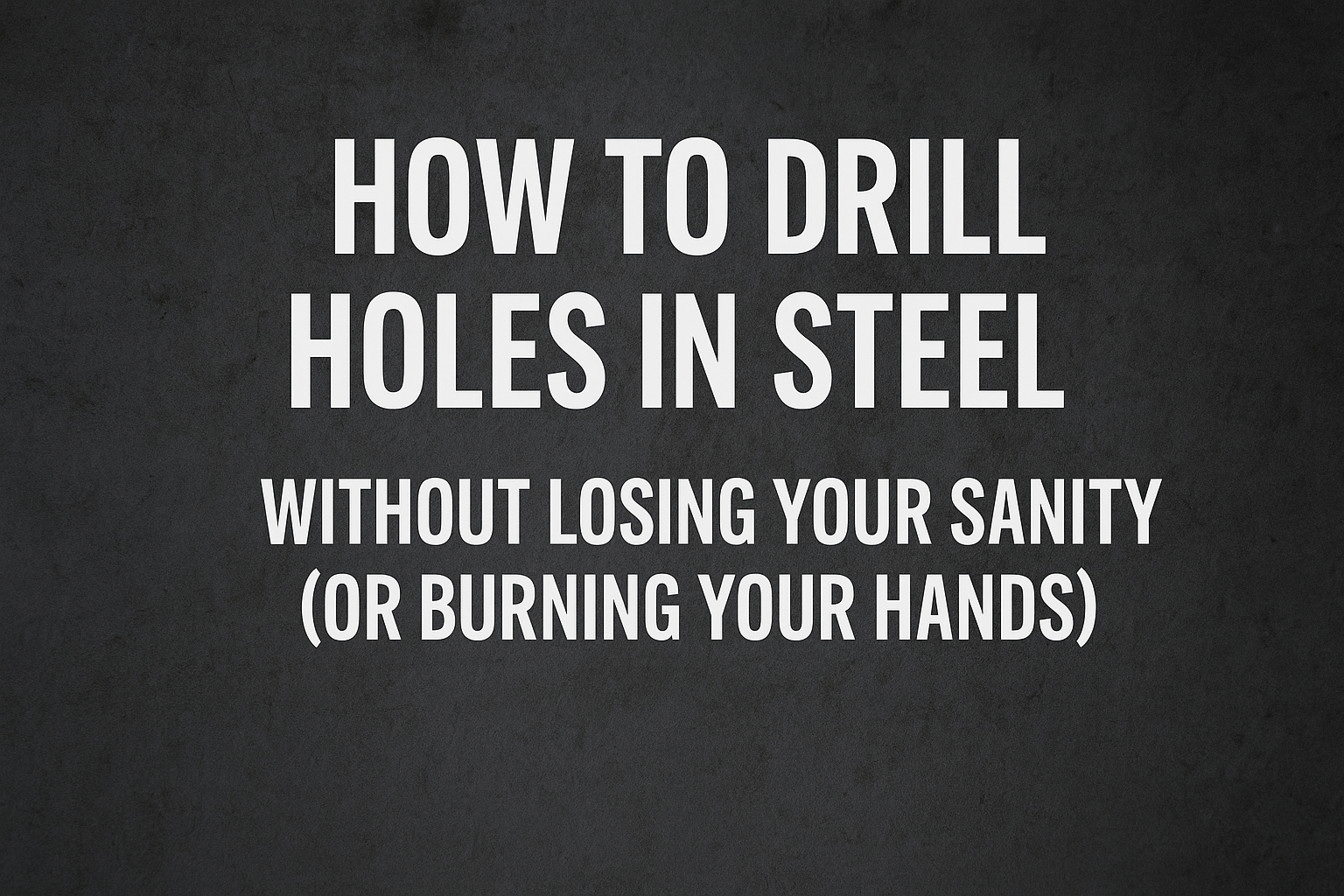How to Drill Holes in Steel Without Losing Your Sanity (or Burning Your Hands)
Installing rock sliders on a Jeep sounds simple enough—until you realize you’ve got to drill seven-sixteenths-inch holes straight into the steel frame. That’s when things get interesting. In this post, I’ll walk you through the method I use for drilling holes in thick steel, especially when your tools are older than your project vehicle and your forearms are crying out for mercy.
This isn’t a full install walkthrough of the LOD Signature Series Rock Sliders—though I might post that separately—but it is a clutch tip I’ve found useful. And if you’re messing with the frame of your rig, it could save you a ton of time and pain.
The Problem: Thick Steel + Weak Drill = Frustration
Let me set the scene: I’m drilling into the chassis of my Jeep using an old plug-in drill with a top speed of 2,500 RPMs and a motor that wheezes like it’s on its last leg. Trying to punch a hole in steel with a 7/16″ bit on that setup? Nope. You’re going to dull your bit, burn your hands, and curse everything within earshot.
So here’s the system I use—a simple, three-step process to make clean, accurate holes in thick metal. It’s not fancy, but it works.
Step 1: Drill Pilot Holes
Start with a small drill bit. I wish I could tell you the exact size I use, but my eyesight’s not what it used to be and I forgot my glasses in the garage (classic). Just know it’s small. This pilot hole makes it much easier to stay centered and drill accurately—especially when working at weird angles under a Jeep.
Pro tip: Drill all the pilot holes at once before switching bits. That way, you’re not swapping bits every five minutes like a rookie.
Step 2: Use a Step Bit (a.k.a. Your New Best Friend)
Next up: the step bit. This thing looks weird but works wonders. Each “step” is marked by size, so you just drill until you hit the size you want. In this case, I’m stopping at the 7/16” step.
But—and this is key—the step bit doesn’t go deep enough to punch all the way through the Jeep’s frame. The steps are too shallow for that kind of thickness. So…
Step 3: Finish with a Full-Size Bit
Once you’ve got a nice guide hole with the step bit, switch to your final 7/16″ bit. It’ll cut much more cleanly now, and you won’t be wrestling the drill like you’re trying to tame a wild animal.
Bonus tip: Get bits with hexagonal shanks. They grip better in the drill and don’t spin like round-shank bits do (which is the worst when your drill chuck is tired and smooth).
Don’t Forget the Cutting Fluid
This one’s important: use cutting fluid. I use Tap Magic EP Extra, but any cutting fluid will do. It keeps the heat down and helps your bits last longer. You can also use it when tapping the holes later.
I’ve killed drill bits by going dry. Don’t be like me.
Tapping the Frame: First Time, Still Alive
This install called for tapped holes in the frame—meaning you’re not just drilling, but threading the holes so you can bolt the sliders on directly. This was my first time tapping something this thick, and it definitely takes some finesse to keep things perpendicular.
Go slow. Clean the shavings out. Use cutting fluid. Breathe.
Final Thoughts (and Some Burnt Skin)
Here’s one more quick pointer: if you’re drilling upward, cover your damn hands. Hot steel shavings hurt. Gloves and long sleeves are your friends—learn from my mistakes.
Once the rock sliders are on, I’ll probably post a photo or do a quick write-up on why I went with them and ditched the stock rails. But for now, I hope this helps anyone doing frame work or modding their rig.
Little tips like these don’t seem like much—but when you’re lying under your Jeep in the dark with a weak drill and steel shavings falling into your sleeves, they can be a lifesaver.




